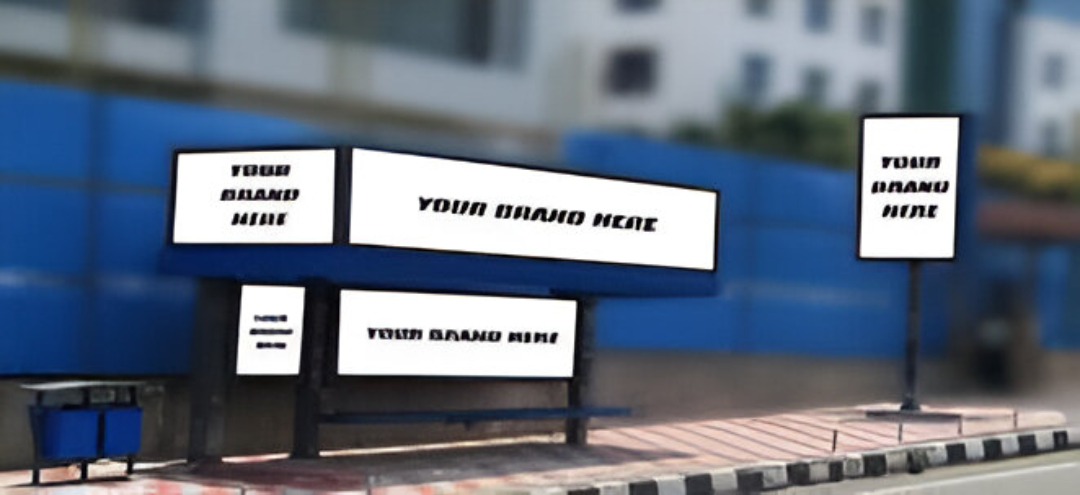
Mumbai is not just a city – it is a movement. With its fast-paced life, packed local trains, crowded streets, and endless streams of commuters, the city offers one of the most dynamic platforms for outdoor advertising. Among these, bus shelter advertising stands out as a powerful medium for both local businesses and large brands looking to make an impact in real time.
As India, commercial hub continues to grow and modernize, bus shelter advertising in Mumbai is also evolving. Let us explore the key trends that are shaping the future of bus shelter advertising in Mumbai.
1. Shift Toward Digital Bus Shelters
While static posters continue to dominate most parts of Mumbai, premium locations are seeing a gradual shift towards digital bus shelters. These high-tech displays allow brands to
-
Rotate multiple creatives
-
Schedule ads based on time of day
-
Run animated or video-based campaigns.
You will find digital shelters in areas like Bandra, BKC, Lower Parel, Andheri, and Marine Drive, where high-end brands are increasingly choosing digital formats to engage Mumbai tech-savvy audience.
2. Hyperlocal Targeting for Maximum Relevance
With Mumbai divided into diverse zones – from South Bombay upscale streets to the suburbs of Thane and Navi Mumbai – brands are now focusing more on localized messaging. Bus shelters placed in specific neighborhoods carry ads that reflect the local language, culture, or needs of the community.
For example
-
Coaching classes advertise near student hubs like Dadar and Andheri.
-
Salons and boutiques promote services in residential areas like Malad and Borivali.
-
Real estate companies target fast-growing zones like Mira Road and Goregaon East.
Hyperlocal targeting ensures better brand recall and emotional connection.
3. Integration with Digital Campaigns
Today advertisers in Mumbai are no longer treating bus shelter ads as standalone campaigns. Instead, they are integrating them with digital platforms like Google Ads, Instagram reels, and influencer collaborations.
A person might see a real estate ad at a bus stop in Powai and later get a follow-up reel or sponsored ad on their phone. This cross-platform reinforcement is making outdoor campaigns stronger and more trackable.
4. Rise in Government and Civic Campaigns
The BMC and other government bodies are increasingly using bus shelters for public awareness campaigns. Whether it is promoting Swachh Bharat cleanliness drives, COVID-19 protocols, voter registration, or water conservation efforts, bus stops serve as direct communication points with the general public.
These campaigns are often seen in both Hindi and Marathi, ensuring maximum impact in local communities.
5. Creative and 3D Innovations
Mumbai creative agencies are pushing boundaries with 3D installations and interactive bus shelter designs. From a life-size coffee cup for a café launch to motion-sensitive lighting for a tech product, brands are turning ordinary shelters into attention-grabbing brand zones.
This creativity transforms a static space into an immersive experience and boosts both engagement and social media sharing.
6. Longer Campaign Durations for Brand Building
With high daily footfall and slow-moving traffic in many areas, bus shelters in Mumbai offer brands long-lasting visibility. Businesses are now booking longer durations – sometimes even six months – to maintain a consistent presence in one location.
This is particularly effective for
-
Healthcare clinics
-
Fitness centers
-
Supermarkets
-
Local educational institutions
Long-term presence reinforces trust and drives repeated engagement from the same audience.
7. Strategic Placement Around Transit and Commercial Zones
Mumbai bus shelters are becoming more data-driven in terms of placement. Brands are focusing on shelters that are close to
-
Metro stations
-
Office parks and coworking spaces
-
Shopping zones like Phoenix Market City or Oberoi Mall
-
Railway stations such as CST, Dadar, or Churchgate
These are high-traffic zones where dwell time is longer and viewer engagement is higher. A well-placed ad in these areas can generate thousands of impressions daily.
8. Eco-Friendly and Solar-Powered Shelters
With increasing focus on sustainability, the Brihanmumbai Municipal Corporation is working towards developing solar-powered bus shelters. This initiative aligns with Mumbai push toward smart city infrastructure.
Brands that associate with these eco-friendly shelters enjoy the added benefit of being perceived as responsible and progressive in the eyes of environmentally conscious consumers.
9. Collaboration with Influencer and Local Events
Some brands are combining bus shelter ads with on-ground promotions and influencer tie-ins. For example, a fashion brand might launch a shelter ad campaign in Bandra and also organize a pop-up event nearby with local influencers sharing content on social media.
This blended visibility amplifies reach and gives the campaign both digital buzz and physical presence.
10. Use of QR Codes and Mobile Triggers
Modern bus shelter ads in Mumbai are increasingly including QR codes and short links to drive user interaction. Whether it is a food delivery offer, real estate brochure, event ticket, or app download, brands are using quick access tools to turn ad viewers into leads instantly.
This strategy helps in tracking engagement and measuring campaign ROI in a more practical way.
Mumbai is a city that moves fast but never forgets what it sees every day. That is where bus shelter advertising continues to hold its ground – by delivering consistent, high-impact visibility in a city of endless movement.
From digital screens and hyperlocal messages to creative installations and civic awareness, Mumbai bus shelters have become smart outdoor canvases. For brands looking to connect with Mumbaikars in real time and real spaces, bus shelter advertising remains a trend that is not just alive but thriving.
As the city continues to grow vertically and digitally, its streets will still belong to the messages that meet people on the ground, and bus shelters will be leading that conversation.